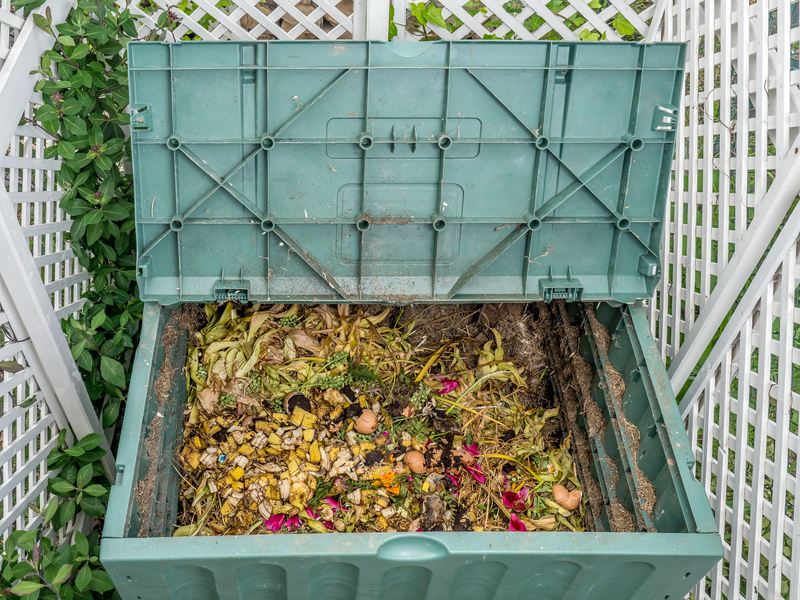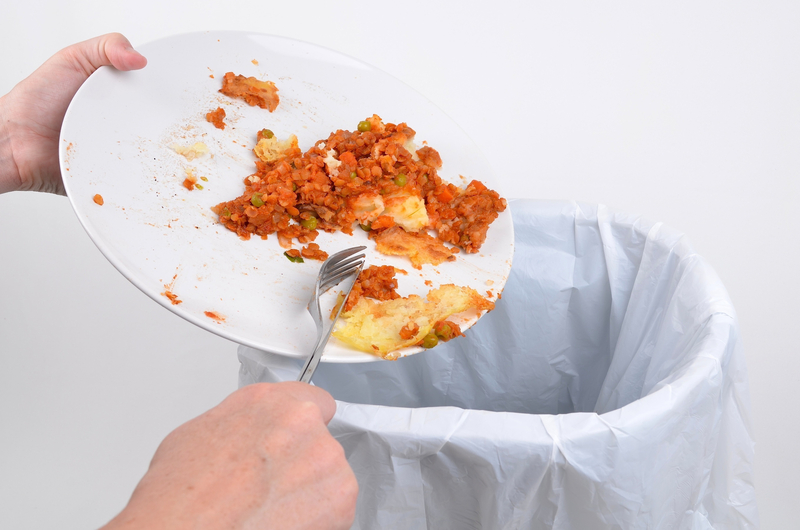Ways to Ensure PPE Waste Ends Up in the Right Place
Personal protective equipment (PPE) has become an essential part of our daily lives, especially since the global COVID-19 pandemic. From face masks and gloves to face shields and gowns, disposable PPE is crucial in protecting individuals from harmful pathogens and hazardous substances. However, the rise in PPE consumption has also introduced a new challenge--managing PPE waste effectively to prevent environmental pollution and public health risks.
Why Proper PPE Waste Disposal Matters
Disposing of PPE items in the wrong place can have significant environmental and health implications. For instance:
- Wildlife ingestion: Animals can mistake discarded masks for food, resulting in injury or death.
- Pollution: PPE materials, especially plastics, can take hundreds of years to decompose, contaminating soil and water.
- Public health risks: Improper disposal of contaminated PPE may spread diseases and put sanitation workers at risk.
- Clogged systems: When thrown into toilets or drains, PPE can block sewer systems, causing costly repairs.
Understanding the right methods to dispose of PPE waste helps us mitigate these risks. Let's look at comprehensive ways to ensure PPE waste ends up in the right place.

Understanding PPE Waste: Types and Classifications
Prior to discussing disposal methods, it's crucial to identify the various types of PPE waste. Generally, PPE waste can be classified as follows:
- Non-contaminated PPE: Items used in non-medical settings--not exposed to hazardous substances or pathogens.
- Contaminated PPE: PPE exposed to hazardous material, biological agents, or infectious pathogens (e.g., hospitals, COVID-19 wards).
- Reusable vs. Disposable PPE: Reusable PPE should be laundered and sanitized, not discarded, while disposable PPE is meant for single-use disposal.
Knowing the type of PPE you're dealing with is the first step to ensuring it ends up in the right waste stream.
Best Practices to Ensure Proper PPE Waste Disposal
1. Establish Clearly Labeled Waste Bins
One of the simplest ways to manage PPE waste effectively is by providing designated, clearly labeled bins. Here's how to optimize this system:
- Segregate PPE waste: Use separate bins for contaminated and non-contaminated PPE. Color-code bins--e.g., red for hazardous waste, blue or black for general PPE.
- Add clear signage: Use bold text and intuitive images to show what types of PPE belong in each bin.
- Strategic placement: Position bins at entry/exit points, workplaces, public transport, and communal areas.
Proper labeling reduces the chances of PPE waste being mixed with recyclables or compostables.
2. Educate and Train Staff and the Public
An informed workforce and community are integral to any PPE waste program. Education ensures everyone knows the proper disposal protocols. Consider:
- Holding regular training sessions for employees--especially custodial and healthcare staff--on handling and disposing of PPE waste.
- Creating informational posters, infographics, or videos that illustrate how, and where, to dispose of masks, gloves, and other PPE.
- Using multiple languages and accessible formats for diverse audiences.
Continuous education is the key to building good habits and compliance.
3. Implement Collection and Pickup Schedules
Unattended PPE waste bins can overflow or attract pests. Set up regular collection and disposal routines for PPE-specific waste bins. This may involve:
- Partnering with licensed waste management companies who handle medical and hazardous waste.
- Scheduling frequent pickups during peak usage times.
- Maintaining records of waste collection for regulatory compliance.
This approach is critical in hospitals, clinics, and busy public spaces where high volumes of PPE are in use.
4. Use PPE Waste Sealable Bags and Containers
To prevent leaks and contamination, provide sealable and sturdy waste bags or containers for PPE disposal. Features to look for include:
- Thick, tear-resistant liners to contain sharp objects such as face shields.
- Closable lids that minimize odors and prevent spillage.
- Clearly marked biohazard or infectious waste symbols for hazardous PPE.
Sealable containers are especially important for home care settings and mobile health units.
5. Participate in PPE Recycling Programs
Some companies and initiatives offer PPE recycling solutions for items like masks and gloves. Examples include:
- TerraCycle PPE Recycling Boxes: Individuals and organizations can purchase specialty boxes, fill them with used PPE, and send them to be processed and recycled safely.
- Local Authority Initiatives: Some municipalities have partnered with recycling firms to divert PPE waste from landfills.
Check if local government or waste management services support PPE recycling. Ensure that only non-hazardous, non-contaminated PPE is sent for recycling.
6. Promote Reusable PPE Where Safe and Appropriate
Minimizing disposable PPE waste is another effective strategy. Where safety standards allow, encourage the use of:
- Reusable cloth masks (with proper washing instructions).
- Washable gowns and protective clothing.
- Reusable face shields and safety goggles.
Properly sanitize all reusable PPE according to manufacturer guidelines. Reducing reliance on single-use PPE lessens the overall waste burden.
7. Encourage Take-Back Programs at Retailers
Some pharmacies and retailers offer take-back bins for used PPE. Integrating these programs:
- Makes proper disposal more convenient for shoppers.
- Helps channel consumer PPE waste away from general landfills.
- Raises awareness about responsible PPE waste practices.
Ask your local pharmacy or supermarket if they provide such recycling or disposal solutions.
How Major Sectors Can Ensure PPE Waste Properly Ends Up in the Right Place
Healthcare Facilities
- Follow strict protocols for hazardous medical waste disposal.
- Utilize color-coded containers and biohazard bags for contaminated PPE.
- Train staff regularly and display clear instructional signage.
Offices and Businesses
- Provide bins for staff and visitor PPE near entrances and exits.
- Contract with waste services for periodic PPE waste collection.
- Share guidelines and reminders through internal communications.
Public Spaces (Stations, Parks, Malls)
- Ensure high-traffic areas have accessible, labeled PPE waste bins.
- Encourage citizens to avoid littering by running public service announcements.
- Conduct routine checks and cleanups by municipal workers.
Government and Policy Interventions
Effective management of PPE waste also requires strong regulatory frameworks. Authorities can:
- Enforce PPE waste segregation: Make it mandatory in certain sectors to separate PPE from other waste.
- Impose penalties for improper PPE disposal: Fine individuals and businesses that do not comply.
- Fund public education campaigns.
- Support research into new biodegradable PPE materials and sustainable disposal methods.
Innovative Technologies for Improving PPE Waste Disposal
Advancements in technology are contributing to better ways of managing PPE waste:
- Smart waste bins detect and separate PPE from other trash types using sensors and AI.
- PPE-specific incinerators offer clean, energy-efficient disposal of contaminated gear.
- Mobile apps and tracking allow organizations to monitor and optimize PPE waste flows.
- Biodegradable PPE is being developed to naturally break down, reducing long-term waste.
Common Mistakes When Disposing of PPE - And How to Avoid Them
- Throwing masks or gloves in recycling bins (PPE rarely meets recycling criteria and can contaminate recycling streams).
- Flushing PPE down toilets--never dispose of PPE in plumbing systems!
- Mixing contaminated PPE with household trash--use the correct hazardous waste channel instead.
- Touching used PPE with bare hands--always use gloves or touch-free collection equipment.

Frequently Asked Questions About PPE Waste Disposal
-
Can I recycle my disposable mask?
Generally, no. Most disposable masks are not recyclable in regular programs. Look for specialized PPE recycling schemes if available. -
How should I dispose of PPE at home if I have COVID-19?
Double-bag contaminated PPE and store securely for at least 72 hours before putting with household trash, per local guidelines. -
Is burning PPE at home safe?
No. Burning PPE in household settings releases harmful pollutants. Use licensed waste collection services.
Conclusion: Your Role in Responsible PPE Waste Management
The surge in personal protective equipment usage is likely here to stay. But as responsible individuals, businesses, and communities, we must ensure PPE waste ends up in the right place. By following the tips discussed above, you will:
- Reduce pollution and protect wildlife
- Enhance workplace and public health safety
- Support more sustainable PPE use and disposal
Together, with awareness and conscious action, we can keep discarded PPE from polluting our world.
Start today--educate those around you and make responsible PPE waste disposal a daily habit!